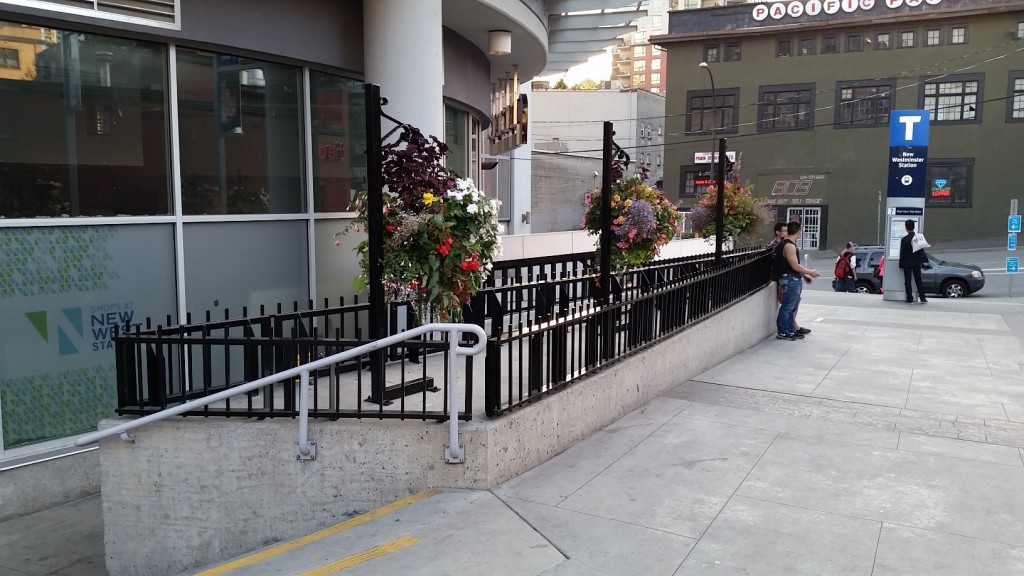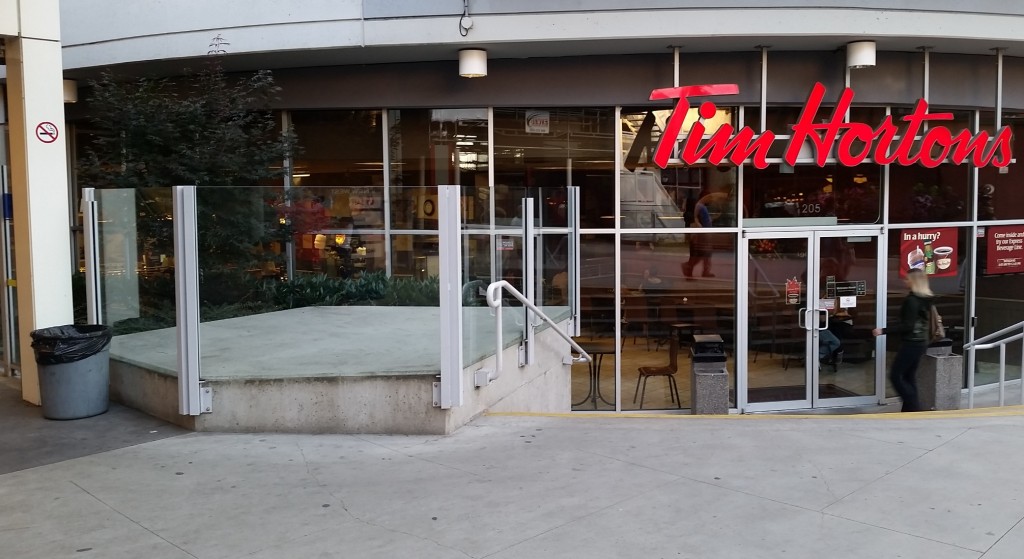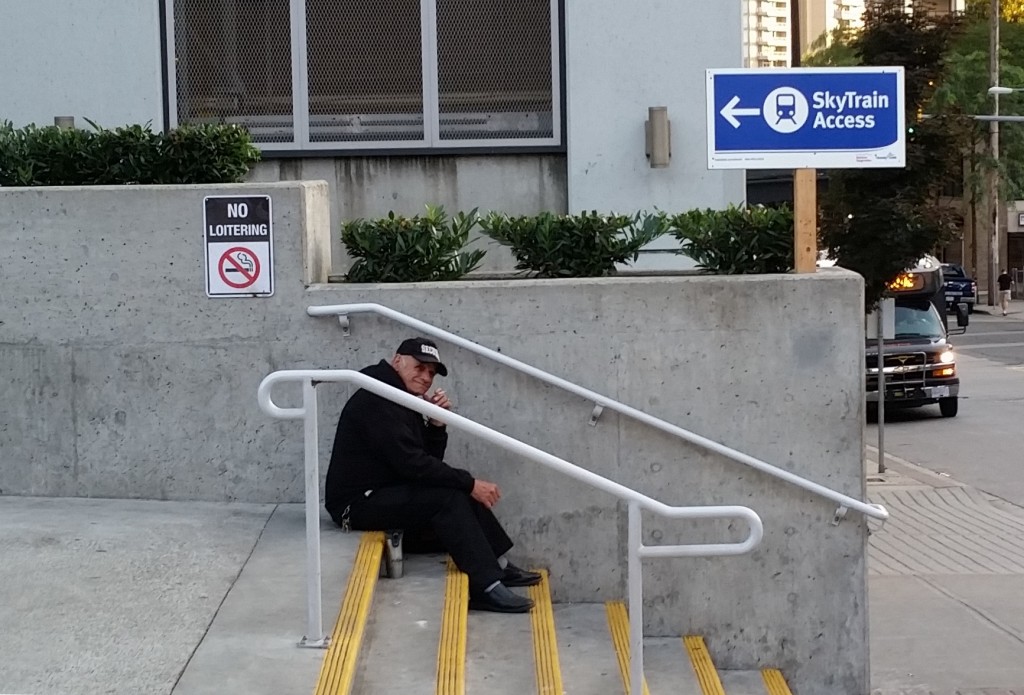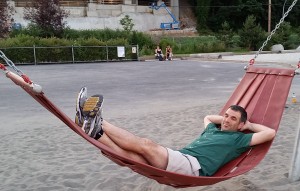When the City decided to support our growing Pride Celebration week this year by painting a crosswalk with the rainbow symbol of Pride, the reaction was immediately positive. Aside from mentions in the local and alternative media, and a huge splash on social media, there was no big press rush or ribbon-cutting unveiling. It was a small but meaningful gesture, and we are far from the first community to do it.
@MsNWimby and I decided to take walk by after dinner yesterday so she could see it for the first time, and I was at first buoyed, then dismayed, to see a small crowd gathered taking pictures. Yes, somebody had splashed some household paint on the crosswalk, and all of the sudden, the regional media was interested.
I think it says something about where we are in Canada in 2015 that a City displaying an important symbol of inclusion, diversity, and acceptance is smaller news than someone defacing that symbol. Some might use this to critique modern media’s tendency to tell us what is bad in the world instead of what is good. I prefer to look at it from a more positive side.
The symbol of the Rainbow Flag was once a revolutionary one, born of the historic struggles for acceptance of homosexuality. The rainbow as a symbol of diversity and inclusion grew out of San Francisco as that City became the bulwark of “Gay rights” in the post-Hippie era. As is typical with symbols that challenge orthodoxy, many tried to ban it or belittle it. Fortunately, through the struggle of new generations of activists and community leaders, our society evolved, and the meaning of the flag has evolved with it. It is not just about “Gay rights”, or even homosexuality anymore; it is about recognizing that people are different. Colour, size, age, sexual orientation, gender identity, kinks – nobody is “normal”, because in a society of individuals there is no “normal”. Even I, as a hopelessly Wonderbread white, straight, monogamous, middle-aged, cis, professional male, exist within a spectrum. The rainbow flag reminds me that the privileges once bestowed only upon those within my narrow band of the rainbow must now be enjoyed by all, or we don’t live in a just world. Unfortunately, we do not yet live in that just world.
The good news yesterday was that several people were around the crosswalk when the elderly vandal started slopping paint on it. They were quick to contact the NWPD, who were quick to react, and the gentleman was quite literally caught white-handed. A couple of quick phone calls, and City engineering staff were able to get a clean-up crew out there before the paint had fully dried, minimizing the damage. I’m really proud of our Police and Engineering staff for their quick response, such that by the time the first TV camera arrived on scene, the mess was already disappearing.
I was also happy to see that when the vandalism lit up the social media, the reaction was again almost universally supportive of the rainbow sidewalk. Many people were disappointed that the vandalism had occurred, and some even expressed anger about it. My first Tweet was this:
In hindsight, that probably sounded angrier than I was, as mostly I felt disappointment. It was later I learned the vandal was an aged man whose faculties may not have been completely intact. There is no doubt the act was deliberate, and the man should have to pay restitution to the taxpayers who paid for the policing and clean-up, but I mostly felt sorry for the man who felt so desperate to remain in his own, narrow band of the Rainbow.
With the benefit of 24 hours, and thinking about the elderly gentleman who performed this flaccid protest, I’m reminded of the words of a great leader:
“Love is better than anger. Hope is better than fear. Optimism is better than despair. So let us be loving, hopeful and optimistic. And we’ll change the world.”
Perhaps, as some have suggested, we shouldn’t be angry at the gentleman who saw this as his only way to express himself. Instead, we can be hopeful that he will see that he is only fighting against a more just world. We can also be optimistic about a future where we don’t need this symbol anymore. We aren’t there yet, but we have come far enough that an act against the symbol is bigger news that the displaying of the symbol itself. We are moving in the right direction, and if we handle this right as a community, the step backward represented by this gentleman’s rash act can be far offset by the steps forward taken by the conversation his act precipitated. As was posted on Facebook last night by another New West resident: “We all need to paint more rainbows in the world.”
I hope you all come out and enjoy New West Pride August 8-15th. It is going to be a great series of events, culminating in the Pride Street Party on Saturday the 15th. Get your picture taken with the crosswalk, and use it to start your own conversation.











 I was only a little chagrined to see that mine was the only bike in the rack, amongst the couple of thousand students, parents, siblings, supporters and dignitaries at Queens Park Arena that night! Well, I guess it was kind of a fancy-dress occasion.
I was only a little chagrined to see that mine was the only bike in the rack, amongst the couple of thousand students, parents, siblings, supporters and dignitaries at Queens Park Arena that night! Well, I guess it was kind of a fancy-dress occasion.














